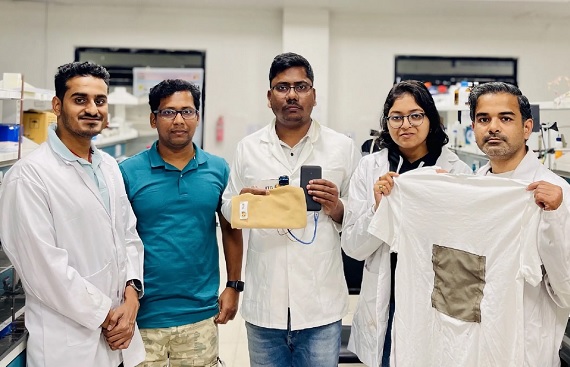IIT Guwahati Develops Self-Heating Conductive Textile
By
siliconindia | Thursday, 13 February 2025, 08:48 Hrs

Researchers at the Indian Institute of Technology (IIT) Guwahati have developed a water-repellent, conductive textile capable of converting both electricity and sunlight into heat. The innovation aims to keep wearers warm in extreme cold, potentially benefiting those exposed to harsh weather conditions and individuals requiring localized heat therapy.
Prolonged exposure to freezing temperatures can cause serious health risks, including arterial blood clotting, breathing difficulties, and weakened immunity. While conductive textiles provide a lightweight, flexible alternative to traditional heating solutions, existing versions suffer from poor durability, high power consumption, and vulnerability to water exposure.
The IIT Guwahati team addressed these limitations by spraying ultra-thin silver nanowires onto cotton fabric, making it conductive while maintaining breathability and flexibility. These nanowires, 100,000 times thinner than a human hair, allow electricity to pass through the fabric efficiently, generating heat without compromising comfort.
“Our textile is self-cleanable, breathable, and flexible, and can be easily scaled up. Its durability and long-lasting performance make it useful in a range of applications that require controlled heating”, said Prof. Uttam Manna from the Department of Chemistry, IIT Guwahati.
Silver nanowires were chosen for their superior electrical conductivity and ability to convert both electricity and sunlight into heat. Their low electrical resistance allows electrothermal conversion at a low voltage, eliminating the risk of electrocution. However, since silver can tarnish over time, affecting performance, the researchers applied a water-repellent coating inspired by lotus leaves to protect the fabric from oxidation, moisture, and stains.
This microscopic rough surface texture causes water droplets to roll off instead of soaking in, ensuring the textile remains dry and effective even in damp conditions. The water-repellent coating also shields the fabric from sweat, rain, and accidental spills, making it suitable for outdoor and everyday use.
The textile can be powered by a small rechargeable battery or solar energy, maintaining a controlled temperature between 40°C and 60°C for over 10 hours. Researchers tested its application in wearable knee and elbow bands, demonstrating its potential to provide warmth for those working in cold environments and arthritis patients needing localized heat therapy.
The findings have been published in the journal Nano-Micro-Small, highlighting the fabric’s potential for practical use in cold weather and medical applications.
